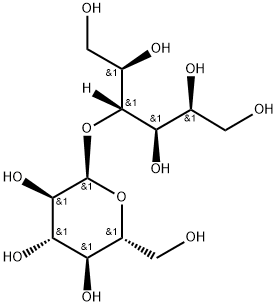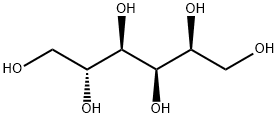PRODUCT Properties
| Melting point: | 149-152 °C (lit.) |
| Boiling point: | 399.42°C (rough estimate) |
| alpha | [α]D20 +106~+108゜ (c=0.8, H2O) |
| Density | 1.3863 (rough estimate) |
| vapor pressure | 0.001Pa at 20℃ |
| refractive index | 105 ° (C=10, H2O) |
| storage temp. | 2-8°C |
| solubility | Very soluble in water, practically insoluble in anhydrous ethanol. |
| pka | 12.84±0.70(Predicted) |
| form | Crystalline Powder |
| color | White |
| Odor | Neutral odor |
| Water Solubility | Soluble in water. Slightly soluble in ethanol. |
| BRN | 89983 |
| Stability: | Hygroscopic |
| LogP | -3.87 at 24℃ |
| CAS DataBase Reference | 585-88-6(CAS DataBase Reference) |
| EPA Substance Registry System | D-Glucitol, 4-O-.alpha.-D-glucopyranosyl- (585-88-6) |
Description and Uses
Maltitol is a-D-glucopyranosyl-1.4-glucitol. The solubility in water is approximately 1,750 g/L at room temperature. Maltitol is stable under the common processing conditions of foods. In addition to dry maltitol several types of syrups are available.
Maltitol is, depending on the concentration, approximately 90 % as sweet as sucrose and noncariogenic.
In the European Union, maltitol is approved as E 965 for a large number of food applications. It is GRAS in the United States and also approved in many other countries.
Maltitol is a polyhydric alcohol (polyol) produced by hydrogenation of maltose. it is approximately 90% as sweet as sucrose, has good stability, and is nonhygroscopic. uses include chewing gum, dry nut bakery products, and chocolate.
Safety
| Symbol(GHS) |  GHS07 |
| Signal word | Warning |
| Hazard statements | H315-H319-H335 |
| Precautionary statements | P261-P305+P351+P338 |
| Safety Statements | 24/25 |
| WGK Germany | 3 |
| RTECS | LZ4394000 |
| TSCA | Yes |
| HS Code | 29400090 |
| Hazardous Substances Data | 585-88-6(Hazardous Substances Data) |


